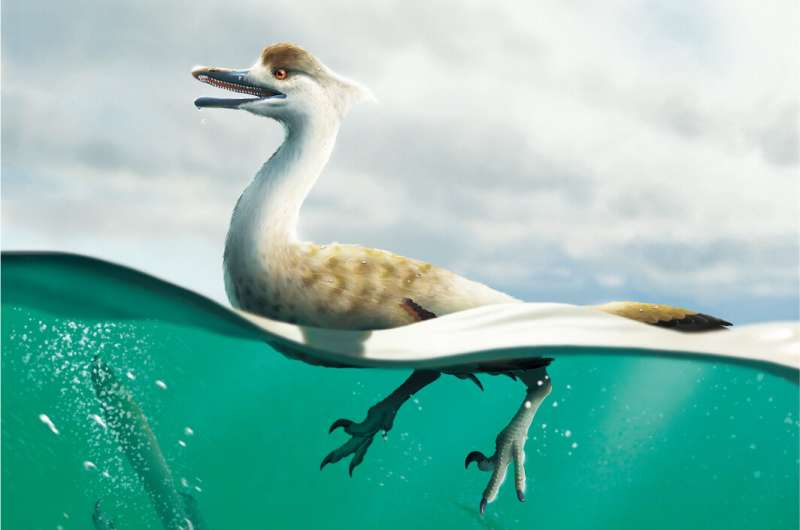December 2, 2022 report
Mongolian fossil is first known species of streamlined non-avian theropod dinosaur to walk on two legs

A team of researchers from Seoul National University, the University of Alberta and the Mongolian Academy of Sciences has identified the first known example of a streamlined, non-avian theropod dinosaur to walk on two legs. In their paper published in Communications Biology, the group describes where the fossil was found, its condition, and its features that were used to help identify it as a new dinosaur species.
The dinosaur was excavated at the Hermiin Tsav fossil formation in Mongolia back in 2008 as part of the Korean-Mongolian International Dinosaur Expedition. Since that time, it has been in storage with hundreds of other fossils awaiting study by experts.
In their study of the fossil, the researchers found it to be well-preserved and nearly complete—it had most of its two hindlimbs, one of its forelimbs, most of its skull and most of its spinal column. It also had a mouthful of teeth. The researchers noted that the skeleton was similar in shape to many modern water birds, sleek and trim, suggesting it lived on or near the water and survived by fishing offshore.
The researchers also noted that its ribs pointed toward its tail, another common feature of waterbirds. But it was not avian—there was no sign of wings. The researchers also noted that the overall shape of the skeleton suggested very strongly that it did not use its forelimbs for walking, likely giving it a penguin-like gait.
Their findings suggest the dinosaur belonged to the therapod family and had not been identified before; thus, it represented a newly discovered species. They named it Natovenator polydontus, which roughly translates to "hunter that swims and has a lot of teeth." They suggest it also most closely resembled Halszkaraptor, another non-avian dinosaur that also lived in what is now Mongolia.
The dinosaur was found in a rock formation dating from the Upper Cretaceous, which places it to roughly 100 million to 66 million years ago. The researchers suggest it was adapted to a semiaquatic lifestyle that was similar to modern water birds, though its large number of teeth suggest it had a more varied diet.
More information: Sungjin Lee et al, A non-avian dinosaur with a streamlined body exhibits potential adaptations for swimming, Communications Biology (2022). DOI: 10.1038/s42003-022-04119-9
Journal information: Communications Biology
© 2022 Science X Network




















